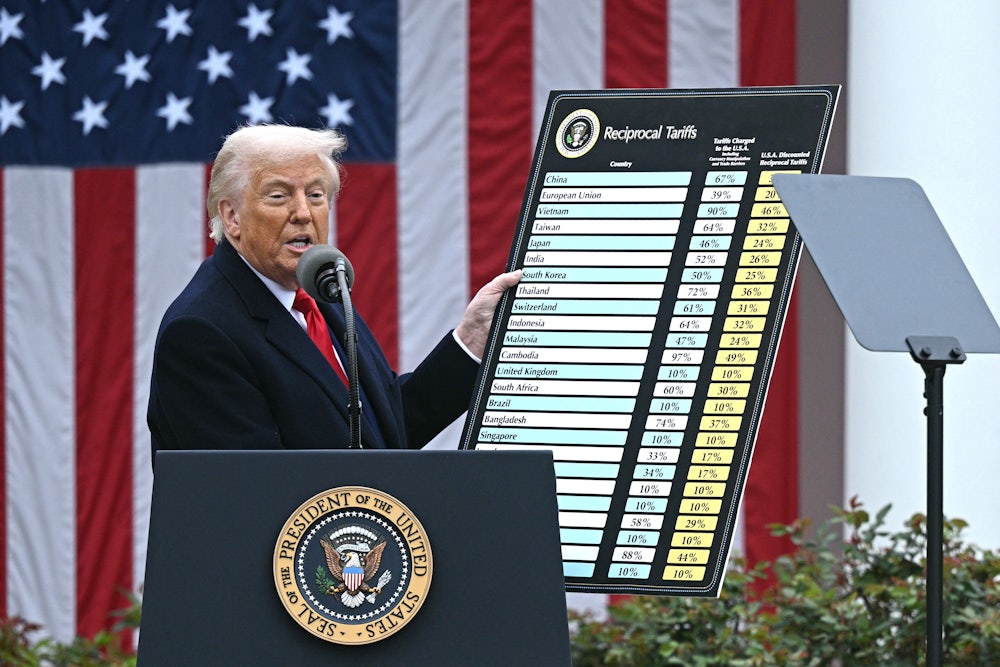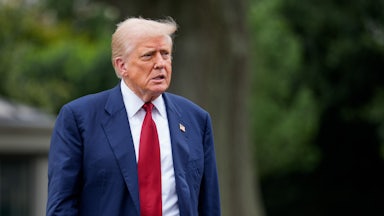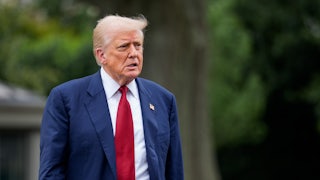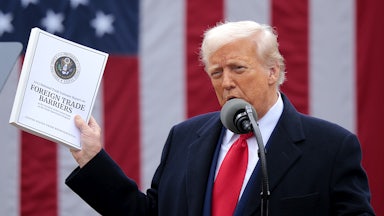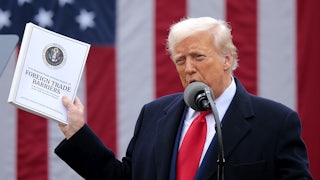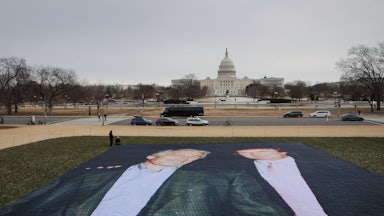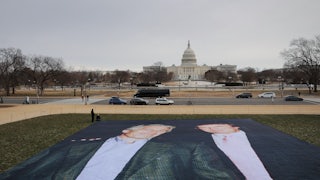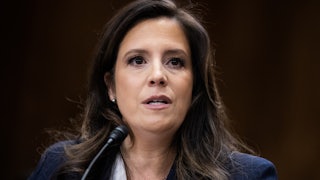It took something called the United States Court of International Trade, which before today I couldn’t locate on a map (it’s a glass cube in Lower Manhattan’s Foley Square), to halt President Donald Trump’s tariff binge. This is what “no” sounds like.
The law to stop Trump’s trade war mayhem, much like the judicial body that finally used it, was hiding in plain sight. In 1977, Congress passed the International Emergency Economic Powers Act, or IEEPA. The name makes it sound like it was intended to expand the president’s emergency powers, but in fact it was intended to limit them. The IEEPA was passed to end the executive branch’s overreliance on the 1917 Trading With the Enemy Act, a law passed in wartime that, as amended in 1933, allowed President Franklin Roosevelt to claim expanded economic powers in peacetime simply by declaring a national emergency.
The economic situation in 1933 was unquestionably an emergency. But in the early 1970s, Congress discovered that no president had ever called that four-decades-old emergency off. As a consequence, presidents continued to exercise the 1917 law’s various emergency powers by, among other things, imposing tariffs wherever and whenever they wished. A Senate Special Committee on the Termination of the National Emergency was established, chaired by liberal Senators Frank Church and Charles Mathias. A 1976 law limiting use of the 1917 law to wartime was one result. The IEEPA was another. It limited the president’s emergency powers in peacetime and empowered Congress to block, by joint resolution, any tariff or other emergency action claimed under the 1977 law.
None of this should have required this court to step in and save the day. The ersatz national emergency that Trump cooked up as justification for his revenue-hungry tariffs ought to have been put to rest by means of a congressional joint resolution. Before Trump, no president had ever claimed IEEPA authority to impose a tariff. But today’s Republican-controlled Congress is James Madison’s worst nightmare, too frozen by terror of a vindictive chief executive to check his power.
In April the Senate did pass one resolution, 51–48, blocking Trump’s nonsensical 25 percent “fentanyl tariff” on Canada, and later that month the Senate narrowly failed to pass a second resolution, 49–49, blocking Trump’s “Liberation Day” tariffs. Under IEEPA, such resolutions are “privileged,” meaning the majority party can’t keep them from coming to the floor. But the House Rules Committee, chaired by the reactionary battle-ax Virginia Foxx, snuck language into a March spending bill blocking House consideration of the Canada resolution.
While Congress dithered, 12 state attorneys general and the Liberty Justice Center, a Texas nonprofit that represented five import-dependent small businesses, filed suit with the United States Court of International Trade. In its summary judgment, the court noted that the IEEPA said its emergency powers could be invoked only “to deal with an unusual and extraordinary threat”—which Trump failed to substantiate—and that “any interpretation of IEAA that delegates unlimited tariff authority to the president is unconstitutional.”
The ruling doesn’t strike down all of Trump’s tariffs, because not all of them rely on the IEEPA. But it ends the Liberation Day tariffs—which, while seemingly changing by the hour, have always included a 10 percent universal tariff—as well as the fentanyl tariffs against Canada, Mexico, and China. Gratifyingly, two of the three judges who voted the tariffs down (there are five judges altogether) were appointed by Republicans, and one of them (Timothy Reif) was appointed by Trump himself in 2019. That renders fairly hollow a White House spokesman’s statement that “it is not for unelected judges to decide how to properly address a national emergency” and Stephen Miller’s complaint that “we are living under a judicial tyranny.”
According to CNBC, Trump may ask the Supreme Court to grant emergency relief from the Court of International Trade’s decision “as soon as Friday.” One wonders whether even the Supreme Court’s most conservative members are getting a little tired of babysitting Trump. Trump filed 41 emergency appeals to the high court during his first term, according to Georgetown Law professor Stephen Vladeck. That’s more than five times as many as George W. Bush and Barack Obama filed during their combined four terms. Trump will probably beat that record before the year is over. It’s not like the high court doesn’t have plenty of other things to do.
Update, 6 p.m.: The United States Court of Appeals this afternoon imposed an administrative stay on the Court of International Trade ruling while it weighs an emergency appeal from the Trump administration.
